Home-grown care: Cenla program for middle schoolers aims to pique interest in medicine
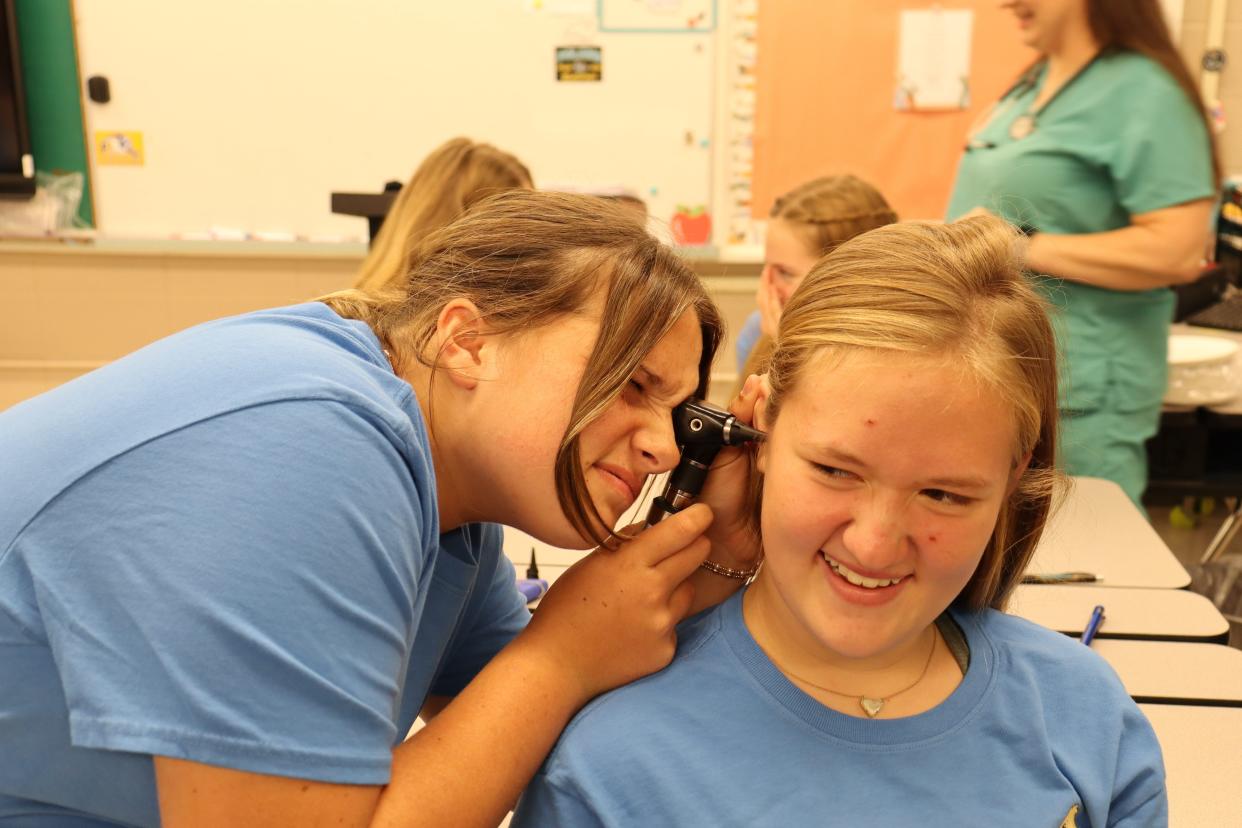
ECHO-POLAND — As Rhonda Foster talked to eighth-graders at Poland Junior High School about her career as a certified pediatric nurse practitioner, they naturally wanted to know about the grossest things she's pulled from kids' ears and noses.
That wasn't the goal of Foster's talk with the students, but it helped her connect with them. Foster, who owns the Paradise Children's Clinic in Ball, was at the rural school on Oct. 11 to participate in a MedStart program.
MedStart, a Rapides Foundation-funded program in its second year in some middle schools, presents medical professionals in different fields monthly to talk with eighth-grade students about health-care careers. It's currently in five Rapides Parish schools — Poland Junior, Alexandria Middle Magnet, Brame Middle, Glenmora Junior and Northwood High schools.
Two hundred students in Avoyelles and LaSalle parishes also participate, and there are plans to add more parishes in the future.
It's a program of the Central Louisiana Area Health Education Center (AHEC), and is the second component of the A-HEC of a Career in HealthC.A.R.E. project, along with the summer program, Camp Fast Forward.
During the camp each June, seventh- and eighth-grade students learn from Central Louisiana Technical Community College instructors for four to five half-days on those campuses.
"Kids right now have the interest in something. They want to start exploring, and so that’s what this program is going to do – give them some tools, give them some information to kind of pique their interests and then show them other opportunities they can do in high school," said Gabrielle Juneau, AHEC's chief executive officer.
Oh, and the grossest thing Foster has pulled from ears or noses? A roach.
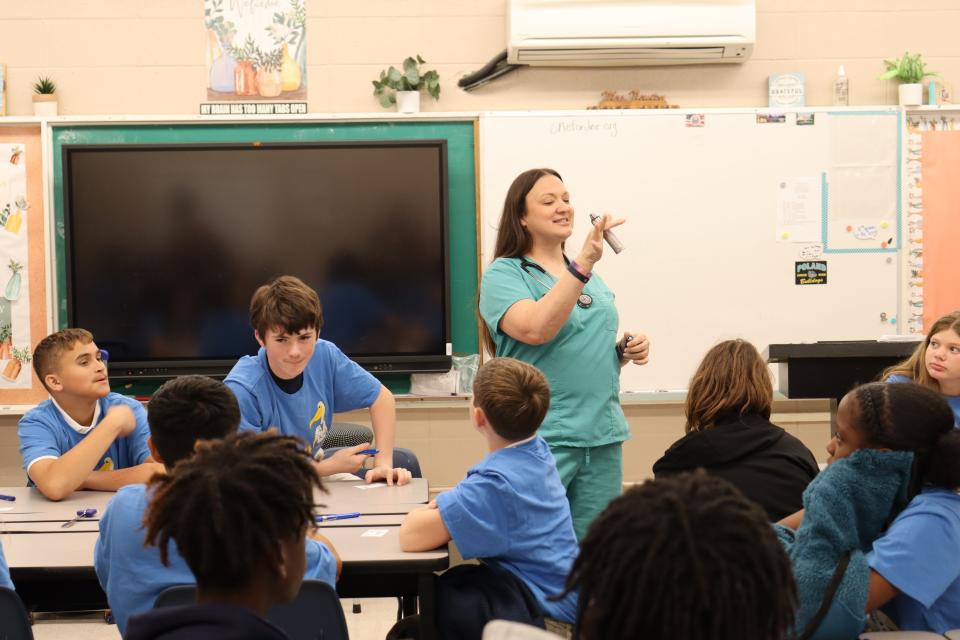
A-HEC of a summer: High school students on the healthcare frontlines, size up careers in the medical field
Photo gallery: Pedaling for a healthy snack
Reaching younger students
Juneau has children in middle school, and she said they recognized a few years ago that schools really don't have tools to showcase different careers. Some guidance counselors can be overwhelmed, she said.
AHEC has been working with high school students since the late 1990s. Juneau said, by the time kids get to high school, they might have lost opportunities with some students.
School is different now, compared to when parents today were students. She pointed to how students now can take courses for college credit now.
"I think it’s, the earlier you start them, getting their mind rolling with some things that interest them, they understand the importance of science and math and how that can relate to a profession in health care."
But Michelle Elliott, AHEC's careers exploration coordinator, said they don't want to focus only on becoming a physician or a nurse. There are loads of other health-care careers that don't require years of study that students can make their livelihood or use as a stepping stone.
"They can go and get a certification in phlebotomy in three months. The same thing with being an EMT," she said.
"They can go to the training for three months and make about $30,000 a year, and still be working on getting their paramedic certification, with which their income doubles. Or they could be going to nursing school. We want to give them a variety of career pathways and, for some, college isn’t what they’re going to be wanting to do or can afford to do."
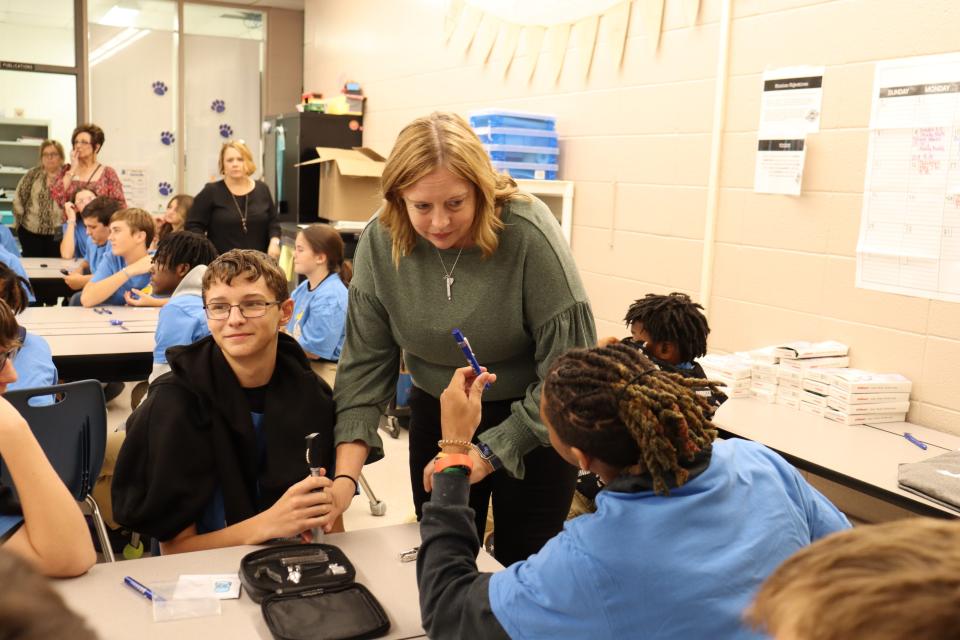
Foster told the kids she began her career as a pediatric intensive-care nurse in the Monroe area. After a few years of that, she began a job transporting pediatric patients to facilities in New Orleans, or she brought patients from smaller areas around North Louisiana to Monroe.
She then went back to school to become a nurse practitioner, and she explained how the field of pediatrics encompasses a greater age range than they think. She can see patients up to age 21, and she can treat special-needs patients throughout their lives, she said.
Foster told the class she spent eight years in school to get her undergraduate and master's degrees.
Now, she works in primary care and mental health at her two clinics, which see patients from about eight parishes.
Foster's career path is part of what MedStart teaches — getting into a field and using it as a stepping stone to advance.
Juneau said a lot of high school students they work with are on pre-nursing or pre-med paths, and they have programs to keep them on track through college and farther.
"It’s just giving them resources, you know," she said.
Focusing on rural and underserved students
Rural and underserved students are "a big focus of all that we do," said Juneau, because they know many of those students are likely to return to their homes and work in those areas.
Elliott also said some students don't have the grades necessary to immediately get into higher careers. The pathways offered by MedStart gives them a way to work their way up to whichever career they wish, she said.
Both women agreed that getting kids involved in programs like MedStart can combat the dropout problem. It also can open the eyes of students who might never have considered that college was possible for them, they said.
They hope that students in their programs talk about them with their parents. It's a reason kids always get some sort of handout to take with them.
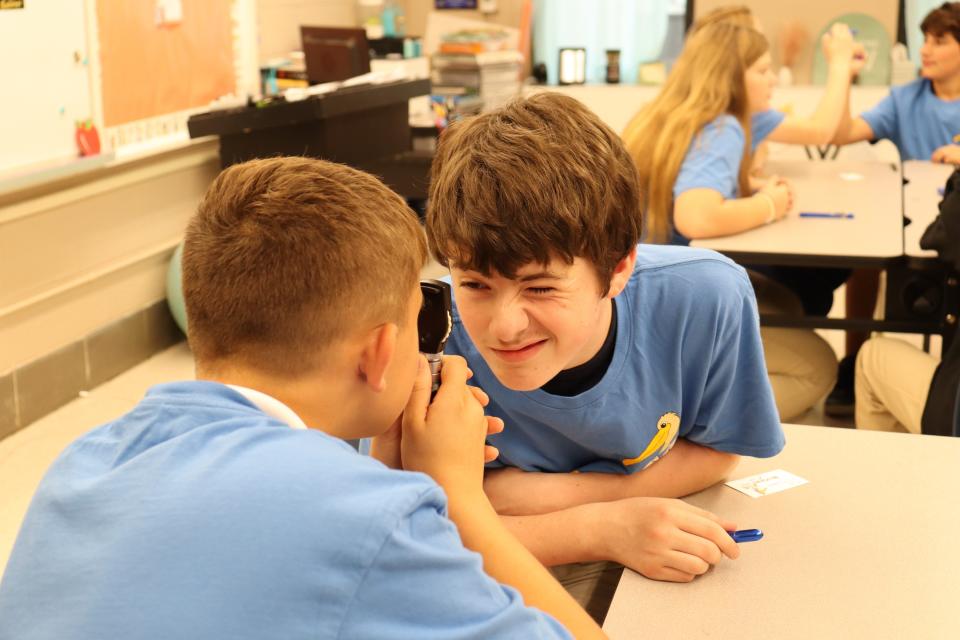
For instance, the Poland students got penlights that can be used to assess the response of pupils, either how fast they respond or constrict when exposed to the bright light. A guide on the pen explains what the different sizes of pupils might mean.
Juneau said things like that "gives parents a direction. Where do I start? How do I start helping my child look at bettering themselves?”
Surpassing their goal
So far, MedStart is serving about 380 students in all the schools were it's offered. The initial goal was 250, so Juneau says the response tells them there's a need for the program.
All of AHEC's programs are free. It's funded by The Rapides Foundation, and Juneau said that funding is "huge.
"We could not offer these programs without partners and funding made available by The Rapides Foundation."
They also work closely under LSU Health Shreveport, she said, adding that they receive state and federal monies through them.
Elliott said they've been told MedStart fills a void. Middle school teachers and principals have said these years are the toughest and that there aren't a lot of programs to channel that energy and students' interests into, unlike in elementary and high schools.
"So this is perfect for us to be offering these types of programs," she said.
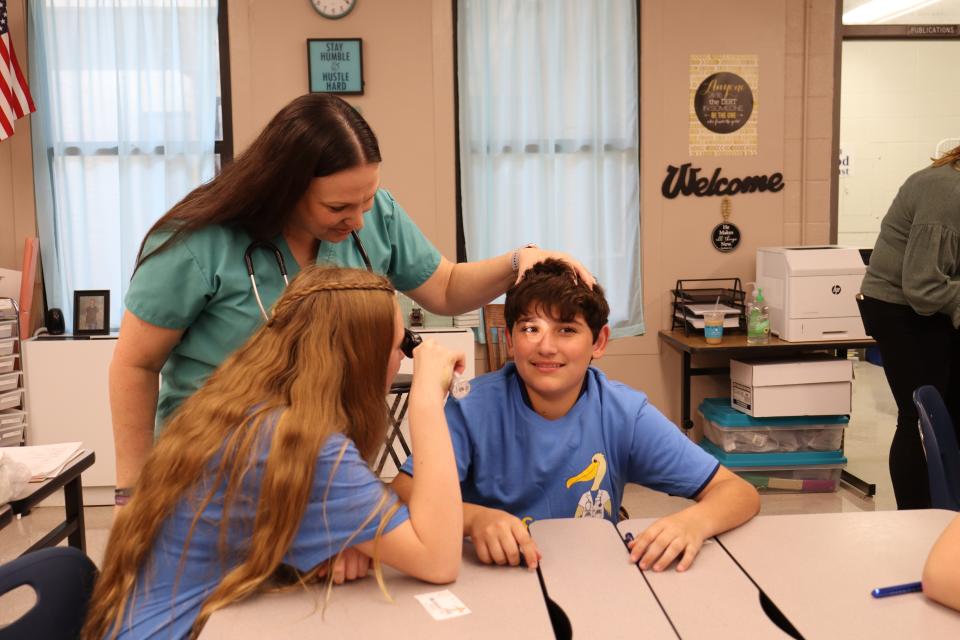
Elliott said it's gratifying to see students raise their hands when asked if they're considering a health-care career.
Juneau said they want students to see what their own communities look like, so it's important to bring in professionals who practice in their areas — like Foster.
One presenter even got to talk to students at a school she had attended, which really conected with them.
"She was very relatable to them," she said. "It’s easier to picture themselves in that profession and coming back to work in a local hospital or a clinic that’s right there."
Juneau said the programs open doors for students. AHEC can continue to help them beyond high school, and it has a program to help rural students make their way into medical school. The end goal is to get those students to come back home and practice in those areas.
"So we want to be that resource, that place that a student who’s interested in health care can come to, and we can help them figure out how to get to the next step," she said.
"We want to grow our own health-care professionals."
This article originally appeared on Alexandria Town Talk: Program for Cenla middle schoolers shows what's possible in medicine

